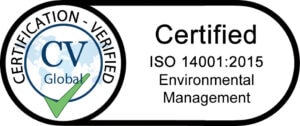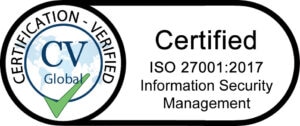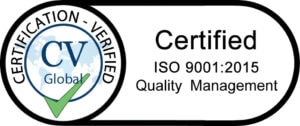Why a strong mobile strategy doesn't stop with devices.
Home / Blog / Buyer’s Guides / Why a strong mobile strategy doesn’t stop with devices
What does enterprise mobility mean to you? If it’s simply equipping employees with portable devices – from smartphones to mobile POS equipment or scanners – and allowing them to work remotely, the chances are you won’t actually be getting the most out of your technology solutions.
That’s because when it comes to developing an effective workplace mobile strategy, the devices themselves are just the tip of the iceberg. While the right hardware is obviously crucial to the success of any strategy, if you don’t have the right software and services to manage the hardware, you’re likely to face higher costs, poorer security, and lower productivity.
With this in mind, here are three other critical elements that need to go into an effective mobile strategy in addition to hardware.
1. Strong MDM solutions
Mobile device management (MDM) tools are the bedrock of any good strategy. These software solutions ensure that IT managers have the right tools at their fingertips to control every aspect of their employees’ mobile device usage.
A key part of this is security and compliance. Effective MDM tools should not only be able to set restrictions on what apps, websites or networks a device can use, but they should be able to apply specific rules for individual users or departments, proactively monitor against threats such as malware, and even remotely wipe data from a device that has been lost or stolen.
Beyond this, MDM tools make day-to-day management of mobile devices much simpler. For instance, they can ensure that any patches and updates are easily rolled out to the entire company, monitor the location of any devices, and make the process of issuing new devices to users much faster.
2. A comprehensive repair and replace strategy
It may not be the first thing that comes to mind when you’re selecting new mobile devices, but having a clear plan in place for what to do when they break is essential. Even in the most low-risk environments such as offices, drops and spills are inevitable, and in harsher conditions such as warehouses and factory floors, you can expect to spend a lot of time repairing cracked and damaged hardware.
If you don’t have a clear plan for this, this will be a costly and time-consuming task that also saps your productivity. Ad-hoc repair plans won’t be able to react quickly enough to get devices fixed and back in the hands of workers quickly enough to ensure they can continue working without interruption, while issuing them with temporary replacements while their primary device is repaired can be haphazard, with no guarantee there will be devices available that offer the necessary functionality.
In the longer term, having a plan for upgrading devices once they reach the end of their useful life is also essential. As well as putting in place a clear schedule than ensures hardware is replaced before it slows down or battery life degrades to such a point that it is hampering productivity and frustrating users, being able to replace large numbers of devices at the same time can work out significantly cheaper, as well as ensuring consistency across your estate, preventing any problems with fragmentation that may occur with more ad-hoc upgrades.
3. A fully integrated solution
Finally, it’s vital to ensure that a good mobile solution covers every location and department under a single, unified system. If businesses have multiple facilities such as warehouses, for example, it can be easy to end up with distinct, disconnected systems for each location, each with their own policies and ways of doing things.
This can lead to confusion if the same procedures are not being followed throughout the business, as well as potentially opening up new security holes. Therefore, it’s essential when a company is expanding to add new locations, departments or product lines, that any existing MDM tools are able to scale up to encompass new users and facilities under the same system.
Scalability should therefore be a top priority for any growing business. When looking for solutions to support mobile devices, ask how many users it will be able to handle, and how easy it is to add extra devices in bulk.
The benefits of a complete system
If you have a solution that covers all of these three factors, you’ll be able to enjoy a much more effective mobile environment that meets the needs of your business both today and in the years to come. More than four out of ten organisations (42 per cent) now consider themselves ‘mobile-first’, according to Enterprise Mobility Exchange, and this figure is growing all the time, so it’s essential firms take steps to ensure they don’t get left behind.
Being able to scale up, easily control the upgrade path and ensure you have full visibility into every device at every time can offer huge productivity and security benefits and will set you up for a mobile-first future. In a landscape where these devices will be at the heart of everything businesses do, the right supporting infrastructure is vital to the success of these strategies.












